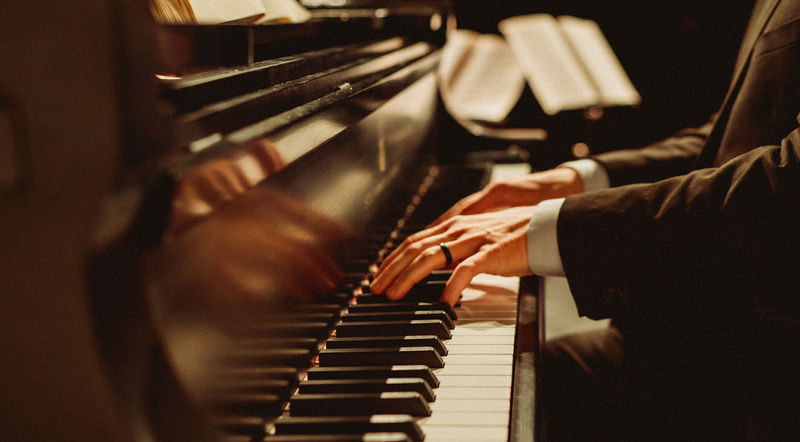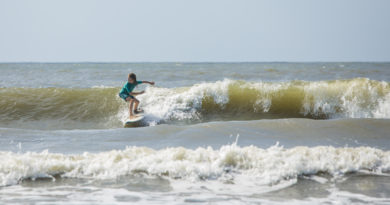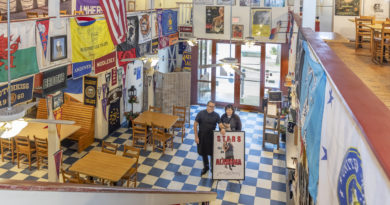Chamber Music Thrives During the Pandemic
story by MICHAEL JOHNS photo by CORINNE PARKER PHOTOGRAPHY
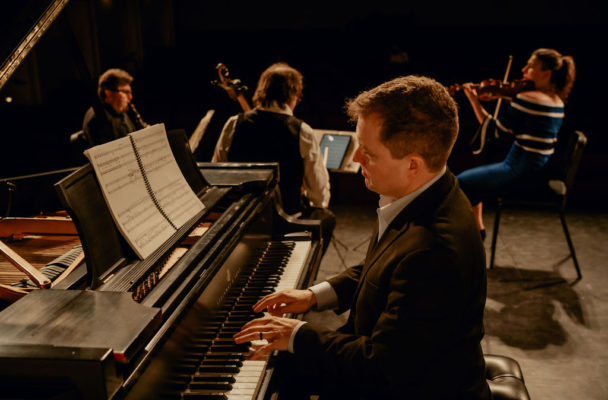
The 42nd Annual USCB Chamber Music season came to a glorious and satisfying conclusion on Palm Sunday. When the pandemic arrived, others shuttered their halls, but USCB Chamber Music did not give up on supporting our artists or our custom of experiencing fine performances of masterful music. Patrons continued to subscribe and attend in the hall or virtually as their comfort level allowed.
Through the miracle of technology, we actually expanded the audience by connecting with residents of the Bishop Gadsden and Cypress Senior Living Communities. Our artists were shut out from many places, but not from the South Carolina Lowcountry. They were thrilled with our support and appreciative of our efforts. One seasoned violinist, unable to fly, drove from Texas because he was so delighted about the prospect of playing for in-person concertgoers. Later in the pandemic, a young violinist from New York left the stage with tears streaming down her face because she was so moved to be able to perform for a live audience.
During this time, the Artistic Director position changed from Edward Arron to Andrew Armstrong. Andy’s loquacious, down-to-earth style and high-energy personality broke down the distance between performer and listener, turning concerts into afternoons among friends.
His first season started with music from the heart of the repertoire: works by Brahms and Schumann. Joining Andy was the internationally recognized touring artist, violinist James Ehnes, who had recently been named Gramophone magazine’s Artist of the Year. Youthful energy dominated the second concert. Striking piano and string work from insightful, though less familiar, composers were performed: Grażyna Bacewicz, Amy Beach, William Grant Still, and Lili Boulanger. Works by Bartók and Schumann bookended the program. The highlight may have been Paul Wiancko’s 2014 American Haiku for Viola and Cello, which the binational composer described as “an identity crisis wrapped in music” and “a search for home.”
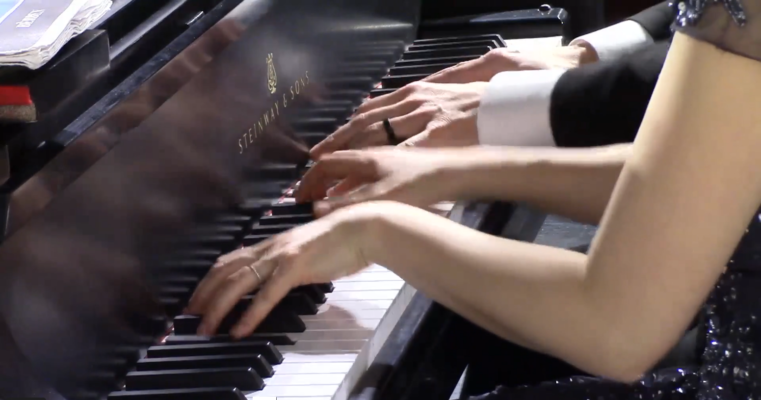
Perhaps the most eagerly anticipated concert, delayed a year by COVID-19, was the farewell performance for former Artistic Director Ed Arron and his wife, Jeewon Park. They began with a set of Mendelssohn cello and piano variations and a sassy tango by Astor Piazzolla, then concluded with Sergei Rachmaninoff’s Sonata for Cello and Piano, one of the biggest, most tuneful, and overtly Romantic works in the cello/piano repertoire. In between were two works for piano four hands, Beethoven’s Egmont Overture and Gershwin’s Rhapsody in Blue. No one was more moved by the public response than Ed and Jeewon; on a chilly January Sunday, the audience could tangibly feel the warmth and gratitude in their playing … Ed and Jeewon could likewise feel the audience’s appreciation onstage.
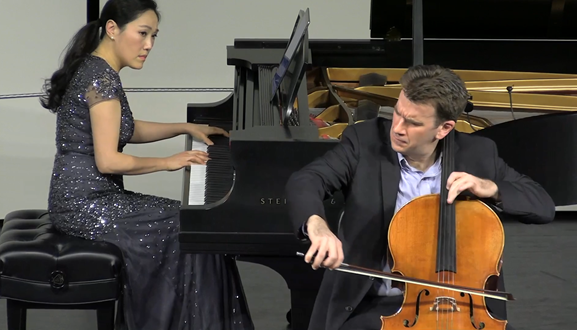
The March concert occurred less than two weeks after the start of the Ukrainian War. It began with two program additions. While bathed in blue and yellow light, violinist and Ukrainian native Solomiya Ivakhiv, accompanied by Andy, played a haunting Ukrainian folk song followed by an eloquent and sincere solo rendition of the Ukrainian national anthem. Two gentle, graceful, and reflective works followed: Beethoven’s ethereal and serene Violin Sonata No. 10 in G Major and William Grant Still’s nostalgic Songs for French Horn and Piano. The mood changed with Chopin’s brilliant, over-the-top Scherzo No. 2 for Piano, a work that, if given a dashing and dazzling performance, is sure to elicit a chorus of “bravos,” which it did. The Chopin was a favorite piece of Board member William Lortz and was played in his memory for his many efforts on behalf of our artists, our concerts, and our community. Brahms’ Trio for Horn, Violin, and Piano is a mature work specifically suited to the idiosyncrasies of the horn. It was very personal to Brahms, with a slow movement honoring the memory of his recently deceased mother and lots of hunting-themed horn calls. A rousing performance brought the concert to a close.

The season finale was a multifaceted presentation: classical balance, a world premiere based on Lowcountry legend, Latin American, and cheeky Roarin’ Twenties dance, concluding with the intellectual heft of Brahms. African Dances for Violin and Piano by Samuel Coleridge-Taylor was a lively, tuneful opener. American Jeremy Turner, a classically trained instrumentalist and composer, is making a brilliant career in the hot-house world of stage and screen composition. He was commissioned to write a chamber work and took as his visual starting point a 19th-century Charlestonian tale of murder and mayhem. Scored for piano, violin, cello, and clarinet, Six-Mile House skillfully wove together music and special effects that brought aspects of the legend to life. Works by Paquito D’Rivera and George Gershwin for clarinet and piano were given an extravagant, joyous performance by clarinetist Igor Begelman. Igor, a Ukrainian native, also expressed his thanks for the warmth and respect Beaufort displayed for his beloved country. The concert ended with Brahms’ compact Piano Trio No. 3, a multimovement summation of the genre that received a gripping and convincing performance.
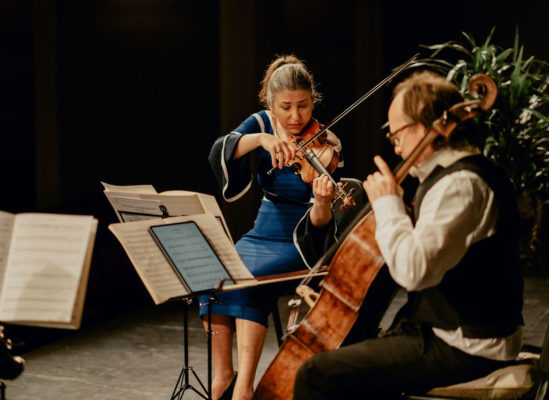
It takes a committed group of people with diverse skills and expertise to create, sustain, and grow an arts organization. Board members, Friends of Chamber Music, support staff, volunteers, performers, and an attentive audience generate an atmosphere that brings all parties into a shared space where creative magic occurs. In spite of the pandemic, Andy Armstrong managed to have a much-deserved, splendid first season in large part because, as he said, “Our audience is so responsive to our efforts.” Enjoy your summer and consider becoming part of this flourishing and marvelous Lowcountry tradition. See you in November.

